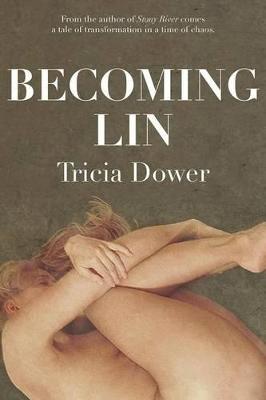Reviewed by Lianne on
Well, whoo, this book was quite a ride. It’s set in a period of great change and upheaval in the United States–as the book blurb mentions, the Civil Rights movement, the protests against the Vietnam War, the sexual and women’s revolutions. Linda–or Lin as she’s now known–becomes involved in all of these fronts one way or the other through her own personal journey. Associated with this is also that generational divide that is apparent from the first chapter, tying in not only to all of these socio-political happenings in the late 1960s and early 1970s but it also crops up in Lin’s personal relationships and changing perspectives with her parents and towards other people as she matures. It’s a period ripe to set a character drama, not to mention some of the issues discussed in the novel still in today’s society.
As the title of the novel states, this is very much Lin’s journey into adulthood, into selfhood. When we first reacquaint ourselves with Linda and her life in Stony River, she’s antsy and looking for a way out of her old life and same-old-same-old. She takes her first ticket out through the charismatic Methodist minister Ron Brunson. While she finds herself in an almost equally intolerable situation as before, she is also introduced–through Ron–to the social movements that were happening at the time, first the protests against the war and hand-in-hand turning towards the equality movement. Lin’s progression and character journey from Stony River to Becoming Lin is perhaps a little surprising–who would’ve thought the quiet girl who always followed the rules would become such a champion for women’s rights and against the government’s tightening measures against protestors?–but makes total sense.
I admit, I was getting a bit frustrated in the last third of the novel on the marriage front as it started hitting Revolutionary Road territory; this isn’t a bad thing–Revolutionary Road was good, it tackled some really sensitive issues too–but the feels I was getting as Lin and Ron try to work out their relationship (or not) was hitting the end of my patience. Also, I do wish there were time stamps to indicate when the chapters were happening: I picked up after the first few chapters that the narrative was going back and forth between the mid-1960s in the early days of Lin and Ron’s marriage to the early/mid-1970s with the later troubles. The journal entries provide some sense of time but otherwise time stamps I think would’ve been handy.
Overall Becoming Lin was a very interesting read set in a period of great activity in American history. Lin’s personal story nicely reflects and intertwines with these greater issues, both informing the other. The author does a great job in bringing the period to life and setting out the different ideas and attitudes that were floating around during this period. I think it’s recommended to check out Stony River first before reading this book as you get a fuller sense of Linda’s background and story, but otherwise Becoming Lin was an great follow-up to her story.
Reading updates
- Started reading
- 16 February, 2016: Finished reading
- 16 February, 2016: Reviewed
